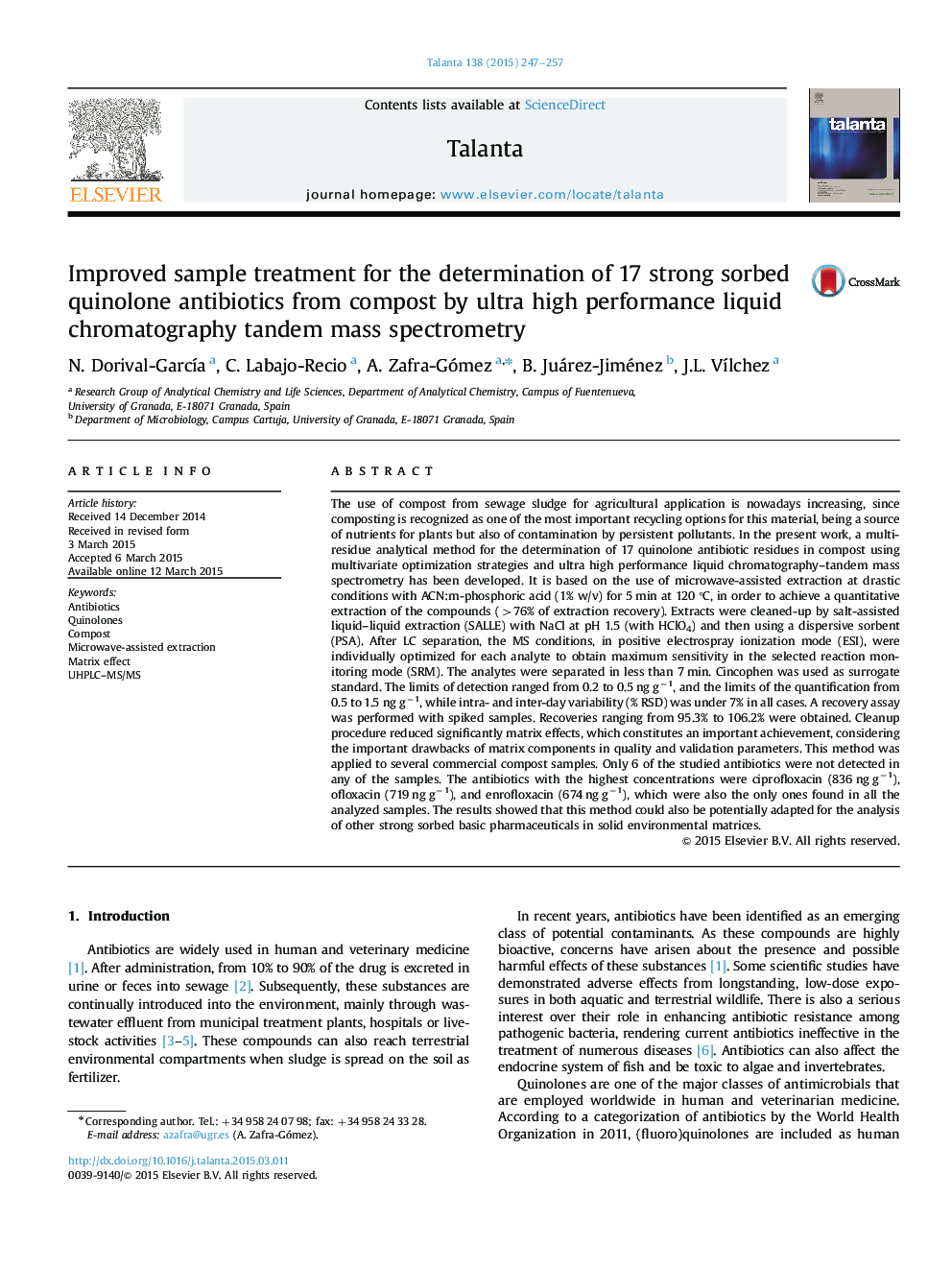| کد مقاله | کد نشریه | سال انتشار | مقاله انگلیسی | نسخه تمام متن |
|---|---|---|---|---|
| 1243357 | 1495797 | 2015 | 11 صفحه PDF | دانلود رایگان |
• Determination of 17 strong sorbed quinolone antibiotics in compost from sewage sludge.
• The extraction of analytes is based on the use of MAE under drastic conditions.
• A cleanup step using SALLE and a dispersive sorbent (PSA) is also applied.
• Sample treatment is optimized using multivariate optimization strategies.
• The proposed analytical method to measure antibiotics in compost is validated.
The use of compost from sewage sludge for agricultural application is nowadays increasing, since composting is recognized as one of the most important recycling options for this material, being a source of nutrients for plants but also of contamination by persistent pollutants. In the present work, a multi-residue analytical method for the determination of 17 quinolone antibiotic residues in compost using multivariate optimization strategies and ultra high performance liquid chromatography–tandem mass spectrometry has been developed. It is based on the use of microwave-assisted extraction at drastic conditions with ACN:m-phosphoric acid (1% w/v) for 5 min at 120 °C, in order to achieve a quantitative extraction of the compounds (>76% of extraction recovery). Extracts were cleaned-up by salt-assisted liquid–liquid extraction (SALLE) with NaCl at pH 1.5 (with HClO4) and then using a dispersive sorbent (PSA). After LC separation, the MS conditions, in positive electrospray ionization mode (ESI), were individually optimized for each analyte to obtain maximum sensitivity in the selected reaction monitoring mode (SRM). The analytes were separated in less than 7 min. Cincophen was used as surrogate standard. The limits of detection ranged from 0.2 to 0.5 ng g−1, and the limits of the quantification from 0.5 to 1.5 ng g−1, while intra- and inter-day variability (% RSD) was under 7% in all cases. A recovery assay was performed with spiked samples. Recoveries ranging from 95.3% to 106.2% were obtained. Cleanup procedure reduced significantly matrix effects, which constitutes an important achievement, considering the important drawbacks of matrix components in quality and validation parameters. This method was applied to several commercial compost samples. Only 6 of the studied antibiotics were not detected in any of the samples. The antibiotics with the highest concentrations were ciprofloxacin (836 ng g−1), ofloxacin (719 ng g−1), and enrofloxacin (674 ng g−1), which were also the only ones found in all the analyzed samples. The results showed that this method could also be potentially adapted for the analysis of other strong sorbed basic pharmaceuticals in solid environmental matrices.
Figure optionsDownload as PowerPoint slide
Journal: Talanta - Volume 138, 1 June 2015, Pages 247–257
